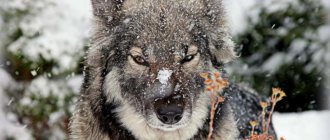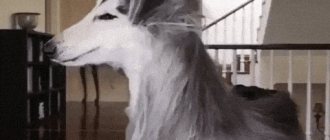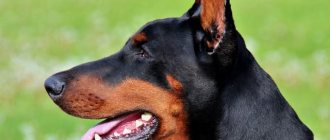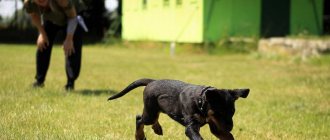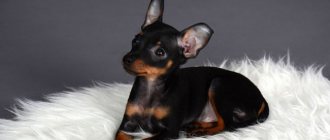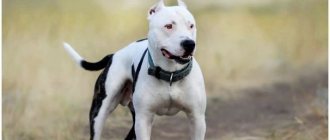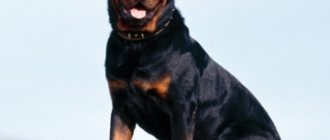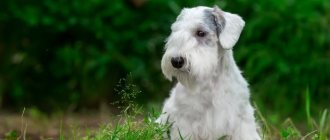A handler is a professional dog handler who prepares dogs for exhibitions and dog shows. Specialists can be useful to owners of purebred dogs and breeders.
Owners hire assistants not only to prepare for a specific event, but also to regularly care for their pet. The fact is that some breeds are so capricious that they require special attention on an ongoing basis.
Relevance of the profession
It is mistakenly believed that handlers are in demand only abroad. But in Russia about 2000 exhibitions are held annually.
After quarantine restrictions are lifted, the number of events will increase significantly.
It is easy to calculate that tens of thousands of dogs from all over the country require the help of handlers. Currently, approximately 190 breeds are accepted for competitions, so a specialist who understands the nuances of each species will always be in demand.
The difficulty is that it is impossible to become a handler at a state institute. Those who want to immerse themselves in the specialty as much as possible are recommended to graduate from any college or university with a degree in dog handler, and then supplement their education with specialized courses.
Some professional handlers provide individual training. Final employers usually look not at “credentials”, but at work experience. But without documents it will be difficult to find a high-paying job.
What types of occupations are there and what are their differences?
The dog training center offers various types of classes in the hall :
- Individual lessons at a time convenient for you. Necessary for owners who are beginning to master handling , and for “modest” newbie dogs. In addition, this format is convenient for people who have limited time and cannot adapt to the group. Lessons begin with theory, then all skills are practiced without stimuli, until they are perfected. In the future, when the skills have been learned and practiced, it is recommended to switch to group classes, since they are more consistent with the conditions at the exhibition and allow you to practice in the ring. In this case, we will select a group for you among those who want to share the rent of the hall .
- Group classes. Training still begins with theory and explanation of the main points of handling . However, when practicing skills, you and your dog are immediately immersed in conditions that are as close as possible to show conditions.
For more experienced owners, our center plans to conduct master classes and seminars with the participation of eminent handlers and respected experts. We will notify you additionally about such events.
A handler is not just a person walking next to a dog. This is a specialist who will lead your dog to victory and provide it with a successful exhibition career. Contribute to the prestige of your pet - choose training in canine training! Handling will help you forget about disappointments and unnecessary expenses. After all, professional and experienced handlers are guaranteed to lead you to the championship.
What is the job
It seems that the essence of the handler’s work is a beautiful walk with the dog around the ring. But this is the most pleasant and productive part. Before bringing a four-legged participant into the ring, the dog handler studies breed standards, supervises the work of groomers, and sometimes does part of the work of the “dog groomer” himself. However, the profession of a groomer has its own characteristics.
It is important for the handler to spend a lot of time with the dog so that at the crucial moment the pet follows the necessary commands.
Sometimes owners want to take their pet into the ring themselves, so they trust the hired worker with the preparation stage. In this case, the handler also “prepares” the owner: he talks about how to lead the dog correctly, rehearses the pace and gait. In the ring, all attention is focused on the four-legged participants, but it is the one who leads the dog who sets the rhythm and gives the necessary commands.
So, the dog handler does everything to ensure that the purebred dog receives the championship title. The specialist does not have an official job description.
Job descriptions usually include the following items:
- caring for the dog in accordance with breed standards;
- training in the skills necessary to present a dog in the ring;
- control of pre-show grooming (or independent haircutting, ear cleaning, teeth cleaning);
- safe transportation, control of the animal during the exhibition;
- accompaniment of the pet directly in the ring;
- presentation to the judges.
Professional breeders who have several “star” dogs at once do not go to shows themselves, but entrust all the work to handlers. In such cases, specialists agree with the owners on a list of additional services. For example, an assistant may charge money for staying in a hotel with a dog and feeding it.
Guide for dog handlers
Ring management
1.1. The position of the ring in the hand is not fixed, it is adjusted with the index finger. 1.2. Use your wrist and arm strength to guide your dog. 1.3. The hand position must be precise to keep the dog away from the legs. 1.4. The position of the free hand is to maintain balance. 1.5. The leash tension is sufficient to correct the dog. Not too tight and not too loose.
Voice control
2.1. Only effective commands given to the dog. 2.2. Commands must be given before the action and not after. 2.3. The commands are not too loud to disturb or entertain other people. 2.4. Stay quiet when necessary.
Movements
3.1. The dog's movements and the handler's steps must be harmonious. 3.2. The dog should not move in front or behind the handler, but next to it. 3.3. The dog should not be obscured. 3.4. The dog should not lean against the handler. 3.5. The handler should not lean against the dog. 3.6. Reaction to a change in tempo to a faster or slower one. 3.7. Reaction to the handler when stopping.
Showing bite
4.1. The expert's teeth must be shown from 3 sides - right, front and left. 4.2. Position of the hand and fingers. The hand and fingers should not cover the teeth. 4.3. The dog should not be locked. The handler's head should not interfere with the judge's view of the dog. 4.4. The dog's head should be tilted towards the judge's eyes, not towards his knees.
Shading
5.1. The handler must not block the view of the dog when the judge is moving. 5.2. The handler must use 4 basic positions. 5.3. From the kneeling position, smooth transition to backward movements. 5.4. From a standing position, smooth transition with the minimum possible number of steps. 5.5. The handler must not block the judge's view of the dog when moving forward along the line. 5.6. Smooth changes in leash position. 5.7. Control with leash and voice.
Dog poses
6.1. On line 6.1.1. The dog's stance should be balanced. 6.1.2. The dog is standing sideways. 6.1.3. The head is supported with the right hand. 6.1.4. The first dog should not stand close to the fence, corner or table in the ring. 6.1.5. Not too close to the handler, the dog is in front of you. 6.1.6. Do not move forward or backward from the line in which other dogs stand. (When the dog moves forward, an uneven line is obtained) 6.1.8. The dog must always be between the Judge and the Handler (GOLDEN RULE) 6.1.9. The dog can stand “at ease” and in a “relaxed stance - standing easy”. The handler must know the differences and be alert, and react immediately when the expert looks at him. 6.1.10. If there is not enough space in front, take a step back; if moving backward is difficult (blocked), step back behind the line and go to the end of the line. Always with the permission of the steward. (Never cross in front of the line). 6.1.11.Finally, all handlers must be placed in the ring by serial numbers.
6.2. On the table (examination on the table for small dogs, for large dogs - at least 2 meters in front of the table (expert)). 6.2.1. The dog must stand in a balanced position. 6.2.2. The dog's head is fixed with the right hand. 6.2.3. The front legs should be on the edge of the table, closer to the front than to the back. (Small breeds only). 6.2.4. The handler should not be too close to the dog. 6.2.5. The dog is always between the Judge and the Handler (GOLDEN RULE). 6.2.6. The dog can stand at ease and alert. The handler must always be prepared to change his posture when looking at the expert. 6.2.7. If the judge is behind you, walk to the right side of the judge to begin demonstrating the moves. 6.2.8. Be prepared when you move to the side of the judge at the beginning of your demonstration. 6.2.9. At the end of the inspection on the table (field), use a polite “thank you.” Do not penalize the Show Trainer when a dog suddenly decides to run, as long as the handler corrects the dog immediately and smoothly.
Chucky Black at the international exhibition in Poland. Sieradz 2016 The examination is carried out by Jane Paradise (UK)
Three ring turns
7.1. Internal turn. Used in 'T' and 'L'. 7.2. Show twist. Used when moving forward and backward and in the "triangle". 7.3. About turns. Use smooth transitions to demonstrate in front of the judge. · When turns are done correctly, there is no fussy movement of the dog and no free hand is used to guide the dog.
How much do handlers get paid?
The salary of a specialist directly depends on experience. “Star” dog handlers receive approximately 3,000 rubles per hour of training, and beginners are paid 800-1,000 rubles.
The final earnings depend on the number of clients.
3,000 rubles directly for participating in the exhibition.
(the rate increases based on the breed group, event class).
Top specialists who can boast a large number of victories charge about 10,000 rubles
for one exhibition.
You also need to take into account that the handler’s payment may depend on the breed being exhibited.
Large dogs with long hair are very demanding to care for, so training such animals is more expensive. Handlers also identify breeds with complex personalities that are difficult to train. It takes more time to prepare such animals, which means the final amount to be paid will be higher.
Basic figures
To demonstrate all the data and abilities of the student in handling, basic figures are performed. This is considered the minimum set. Judges at exhibitions ask you to perform figures as you wish.
Examples:
- Circle. The handler and the ward move in a circle counterclockwise. The dog must be on the left side. Sometimes they ask you to walk clockwise - the dog is on the right. In this case, the judge is located in the center. It is prohibited to place the animal between the referee and the handler.
- Trajectory "T". The initial position is in the breed stance opposite the judge. The pair moves backwards (dog on the left), makes a turn through the left side, finishes the distance and turns around. The dog makes the transition to the right side. The couple steps forward again, turns around and returns to the original trajectory. The figure ends with a walk to the judge and a standing position.
- "On" and "From". The competitor with the handler goes towards or away from the judge. Perform steps clearly along a straight path in one direction.
- Triangle. The couple walks in a triangle shape with equal sides.
- Trajectory "L" . The beginning of the figure is the breed stance. The movement begins towards the judge, then like a “T” with a turn to the left and one U-turn.
- Trajectory "G". The figure is similar to the previous one, only the couple is walking away from the judge. It also starts with the breed stand.
- Eight. The movements of the figure repeat the writing of the number. The handler is required to ensure that the judge is positioned and that the dog is always visible.
Sometimes the judges will call two contestants to evaluate them. Then the dog needs to be placed on the left or right, depending on the position. Handlers should position themselves at the edges, with animals nearby. During a paired comparison, the judges can come up with a team to show any figure.
How and where to find a professional
Having figured out what a dog handler is, you need to understand where to look for one. Most specialists are themselves members of professional dog handler organizations and have experience working as judges. You can study specialized forums, communicate with other breeders and owners. But you need to take into account that unscrupulous specialists can “inflate” the rating.
You can find handlers with reviews on the independent portal 7hands.com. Before concluding a contract or agreeing on cooperation on a long-term basis, it is worth conducting a personal interview. Animals are very similar to small children and can easily “not accept” a stranger.
It is also not recommended to refuse an extended verification of the selected candidate’s documents.
Handlers are responsible for treating the dog properly. But it is better to make sure that the hired employee does not have a criminal record (especially for cruelty to animals, fights). Large debts should also be a warning. A person with a negative credit history may receive an advance payment and disappear.
Other tips from experienced breeders:
- visit the exhibition, look at a specialist “in action”;
- specify which breeds the chosen assistant works with most often;
- find the owners of dog show winners, ask for recommendations.
Sometimes handlers themselves contact breeders and offer their services to participants in specialized exhibitions. Just leave your contacts at a few shows and helpers will soon start sending out their suggestions.
Puppies of purebred, titled parents are often sold with the condition of being raised by a specific family handler and further participation in exhibitions.
Of course, you can go through training seminars and introduce your dog yourself. But in practice, many nuances arise that are not taught in dog training schools. It may take several years to obtain the coveted first place.
Common Mistakes
Mistakes in the ring with professionals happen very rarely and judges do not forgive them, which cannot be said about beginners. However, it is the handlers who practically never make mistakes, since they know all the canons and rules. However, it is worth familiarizing yourself with the list of the most common mistakes at exhibitions in advance in order to avoid them:
- Late on stage. It doesn’t matter whose fault it was – the dog’s or its trainer’s – it can negatively affect the competitor’s grades.
- Handler's absent-mindedness. We are talking about a dangling leash and blocking the dog from the judges.
- Failure to comply with referee's instructions. Often the latter may change the sequence of actions or ask to speed up/slow down movements. Such instructions cannot be ignored; on the contrary, they should be responded to as quickly as possible.
- Inappropriate feeding of a treat to a competitor. It is unacceptable before examining the mouth and teeth!
- Overemphasizing the positive aspects of the animal. Attracting the attention of experts to the ward through various tricks, for example, by stroking, ruffling fur and other signs of attention. All this is inappropriate and can be regarded by the judges as the coach’s lack of confidence in the experience and competence of the refereeing staff. Experts must evaluate the animal without outside help, so you should not artificially stir up their interest - this causes irritation and can lead to disqualification.
- Incorrect questions. Under no circumstances should you ask experts why the dog did not win. Firstly, a good handler himself knows where he or his ward made mistakes. Secondly, such questions can be considered insolent, which will ultimately affect not only the handler’s career, but will also put an end to the future of the dog, which generally kept quiet.
- Trying to get in good graces with experts. This is done using a technique called boasting. The handler lists his previous achievements or pet. This is what non-professionals do, which does not characterize them from the best side.
- Poor attitude and treatment of the pet. Jerking, shouting, tugging at the collar and leash are unacceptable among specialists and normal people!
- Dirty dog! An unkempt, ill or dirty exhibitor may result in disqualification.
A good trainer treats his ward and colleagues in the ring no less well, showing friendliness, not interfering with showing other dogs, and helping exhibitors when necessary.
What else should the handler know?
Few people know that love for animals and training skills are not all that needs to be demonstrated in the ring. What is often overlooked by those who have done the research on becoming a handler is that judges look not only at the dog, but also at the person presenting it. It is necessary not only to demonstrate the dog’s gait and croup, but also to emphasize the status of the owner. High-level dog shows even have a strict dress code.
Professionals advise choosing clothes so that they are in harmony with the color of your pet’s coat. At the same time, you should not look for tone-on-tone fabric. The owner should not blend in with the dog, nor should he be a bright spot in the ring.
For prestigious shows that are watched by a large number of people, it is recommended to buy beautiful shoes. After all, it is the feet that will most often appear on the screen. This advice applies to owners of small breeds.
Another secret: treats to reward your pet. Not all dogs agree to follow commands or stand in one position for a long time without reward. It is best to take small food pellets with you, and think about places to store them in advance. It is unacceptable to dig around for a long time in search of goodies.
The handler's profession is very interesting.
Handling can become a hobby for the owner of a purebred dog. But if you don’t have the time and desire to study all the nuances associated with holding a dog show, it’s better to hire an experienced specialist. 564 5.0 Rate this article Published: 05/14/2021
Handling styles
The concept of “handling” appeared in America. Today it has become popular in all European countries. Initially, handling originated not in cynology, but in horse breeding, when handlers prepared and showed noble horses for an exhibition.
Interesting! The first dog show was held in England in 1860. Only Pointer and Setter breeds took part in it.
The widespread spread of dog shows dates back to the beginning of the 20th century. Since the 70s, events began to be broadcast by various television channels, and all kinds of dog shows gained popularity. All this has made the handler's profession very in demand and popular in professional circles. The purpose of the shows was not only the opportunity to win and take as many medals and diplomas as possible, but also the socialization of animals, getting to know potential candidates for mating and other representatives of the breed to learn from experience.
The first dog show was held in England in 1860
Handling styles were gradually formed and divided into types, depending on the individuality of the handlers, breed, venues for shows and much more. As a result, a large number of styles were formed, but three main ones stood out among them:
- American style. The most popular and affordable. Allows you to emphasize the advantages of the breed and hide shortcomings, if any. Therefore, in style, each paw of the animal is placed separately, slowly raising and lowering the dog, which, like a construction set, is assembled from parts. Such a demonstration is very impressive, but in order for the animal to behave correctly and accurately follow commands, long preliminary training must be carried out with it.
- The English style is considered free, as the breed is shown without the participation of a handler. The animal independently takes the ideal stance required by the rules. Only accurate execution of the exercise allows you to get a good assessment from experts, and this is possible only after painstaking training, as well as if the dog is interested.
- German style. Also called double. The animal represents and demonstrates to two people at once. This technique is used when showing shepherds, Great Danes, Rottweilers, Dobermans, etc. While one handler holds the dog on a tight leash, the second from behind the stage attracts his attention with toys and food.
Preparation stages
Serious preparation of a competitor for a show or exhibition usually begins no earlier than six months before the event - provided that the dog is already sufficiently trained or has taken part in similar shows before. This time is the minimum during which the pet can get used to the new handler (if this is, of course, not its direct owner) and establish contact with him.
It should be remembered that the process of handling itself includes both physical exercises (trotting in a given figure - for example, a circle, square, etc., standing in a certain position), and examination of the teeth and showing the bite - therefore the dog must not only undergo training , but also to be physically healthy.
Preparing the dog
In order for a dog to be able to take prizes in competitions in the future, it must be prepared and trained from a very young age. Even at the stage of infancy, puppies can already train - first of all, they need socialization in the company of other animals.
To do this, the puppies must be taken for a walk, where she not only gets to know other breeds, but also hears the hum of cars, the conversation of other people, and gets used to various surrounding factors. In the future, this will help her not be afraid of bright lights at exhibitions and many strangers around.
If you want to participate and win in exhibitions, you should provide your pet with proper care, excellent nutrition, grooming, and trimming.
Next, you need to choose a professional handler - don't hesitate to ask for their recommendations and certifications. At the beginning, any handler always gets to know the animal, establishes contact with it, and introduces the animal to the training room or outdoor training area. As a rule, one-time lessons with a handler last no more than 1 hour.
Taking into account the characteristics of each breed and each individual, the handler chooses a manner of behavior that will allow him to most quickly build a relationship with the future competitor. During regular training, the handler will achieve coherence of actions: the dog’s quick response to the command, training in endurance, etc.
Already from the second meeting, the trainer should begin to teach the animal to move correctly - during the show the dog should run slowly, at a walking pace or at a trot. Not every breed will allow you to put on a special thin leash with a rope, by which it will be led into a special ring - all these nuances must be carefully worked out by a professional trainer.
Important! It is necessary to train and accustom the dog to show its teeth and jaw - for this, you can do the following exercise at home: show the pet a treat, gently run the other hand over the dog’s teeth and immediately give a piece of the treat. At the next stage, carefully lift your pet's lips and give the treat again. This will help teach the animal not to be afraid to open its mouth in the future.
Exhibition stand
This stage is the most difficult in the training process; it requires a lot of endurance and desire from the dog. Standing training is carried out gradually, a little at each lesson. Usually, they first teach how to place the paw correctly, and then hold it motionless in the air and place it exactly in the right place.
The handler at first simply stops, and then begins to dance with the animal - while the bag of dog treats is at the level of the dog’s mouth, but they are not given to him. The trainer, holding a treat in front of the animal's face, encourages it to move all its paws, and as soon as they have taken the desired position, the “dance” stops for a couple of seconds, and the pet receives a reward.
Subsequently, this dance will completely disappear from training - the dog must independently rearrange its paws correctly and take the required stance. Stand-up training will continue until the competitor learns to stand motionless in a stand-up position for at least 10 seconds.
Did you know? The first professional exhibition of all dog breeds took place in London in 1863.
Showing movements
The demonstration of movements occurs at every training session - in fact, this includes all the movements that the animal will perform in the ring. And this includes not only trotting and standing, but also exiting and leaving the stage, as well as showing teeth.
Not all dogs allow strangers to approach, let alone touch and examine themselves - for this, a professional handler must from time to time create distractions during training: invite people unfamiliar to the pet, conduct training with several animals, turn on bright lights, provoke noise and fuss.
It is necessary to prepare the dog for various surprises: for example, according to the handling rules, the competitor comes out to the left of the handler, but the judge has the right to ask the animal to be brought out to the right of the trainer - such nuances also need to be worked out.
The dog must learn to perform very uncomfortable movements - correctly, at the right angle, hold his head, move his paws, hold his tail, etc. - therefore, with each correctly performed element, he must receive praise and approval from the handler and owner.
If the pet was able to remain calm and clearly do everything that is required of him, he is almost ready for showing. Ideally, before the main show, there should be a training session with the participation of other dogs and trainers. This will help all competitors better prepare for the main event.
Important! Particular attention should be paid not only to the stance of the pet, but also to how it performs a shallow trot - with the correct trot gait, two paws located diagonally should come off and be placed at the same time: for example, the front left and lower right limbs, and vice versa.
